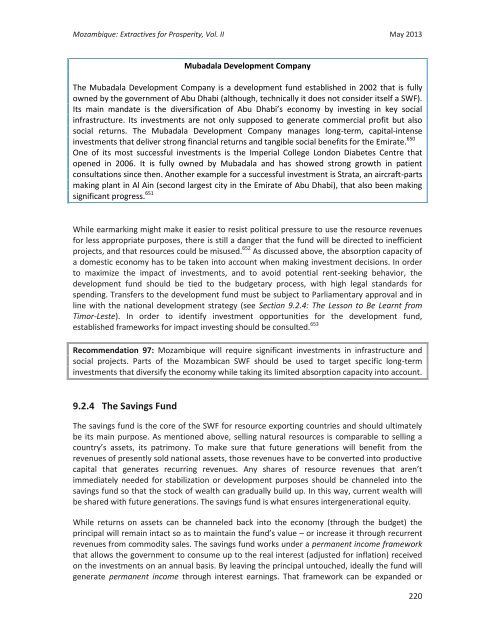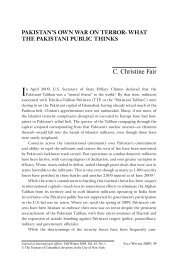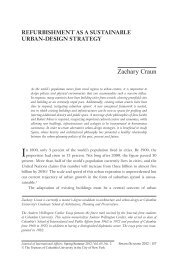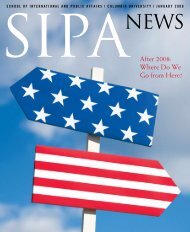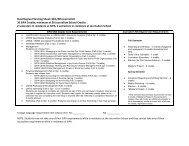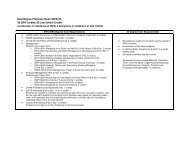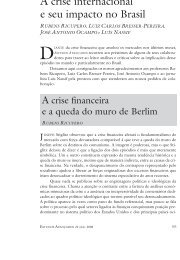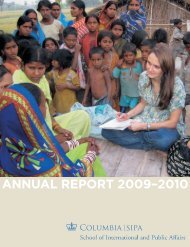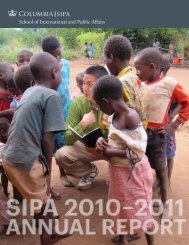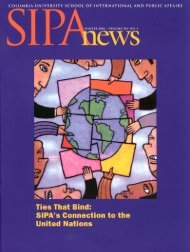Mozambique - School of International and Public Affairs - Columbia ...
Mozambique - School of International and Public Affairs - Columbia ...
Mozambique - School of International and Public Affairs - Columbia ...
You also want an ePaper? Increase the reach of your titles
YUMPU automatically turns print PDFs into web optimized ePapers that Google loves.
<strong>Mozambique</strong>: Extractives for Prosperity, Vol. II May 2013<br />
Mubadala Development Company<br />
The Mubadala Development Company is a development fund established in 2002 that is fully<br />
owned by the government <strong>of</strong> Abu Dhabi (although, technically it does not consider itself a SWF).<br />
Its main m<strong>and</strong>ate is the diversification <strong>of</strong> Abu Dhabi’s economy by investing in key social<br />
infrastructure. Its investments are not only supposed to generate commercial pr<strong>of</strong>it but also<br />
social returns. The Mubadala Development Company manages long-term, capital-intense<br />
investments that deliver strong financial returns <strong>and</strong> tangible social benefits for the Emirate. 650<br />
One <strong>of</strong> its most successful investments is the Imperial College London Diabetes Centre that<br />
opened in 2006. It is fully owned by Mubadala <strong>and</strong> has showed strong growth in patient<br />
consultations since then. Another example for a successful investment is Strata, an aircraft-parts<br />
making plant in Al Ain (second largest city in the Emirate <strong>of</strong> Abu Dhabi), that also been making<br />
significant progress. 651<br />
While earmarking might make it easier to resist political pressure to use the resource revenues<br />
for less appropriate purposes, there is still a danger that the fund will be directed to inefficient<br />
projects, <strong>and</strong> that resources could be misused. 652 As discussed above, the absorption capacity <strong>of</strong><br />
a domestic economy has to be taken into account when making investment decisions. In order<br />
to maximize the impact <strong>of</strong> investments, <strong>and</strong> to avoid potential rent-seeking behavior, the<br />
development fund should be tied to the budgetary process, with high legal st<strong>and</strong>ards for<br />
spending. Transfers to the development fund must be subject to Parliamentary approval <strong>and</strong> in<br />
line with the national development strategy (see Section 9.2.4: The Lesson to Be Learnt from<br />
Timor-Leste). In order to identify investment opportunities for the development fund,<br />
established frameworks for impact investing should be consulted. 653<br />
Recommendation 97: <strong>Mozambique</strong> will require significant investments in infrastructure <strong>and</strong><br />
social projects. Parts <strong>of</strong> the Mozambican SWF should be used to target specific long-term<br />
investments that diversify the economy while taking its limited absorption capacity into account.<br />
9.2.4 The Savings Fund<br />
The savings fund is the core <strong>of</strong> the SWF for resource exporting countries <strong>and</strong> should ultimately<br />
be its main purpose. As mentioned above, selling natural resources is comparable to selling a<br />
country’s assets, its patrimony. To make sure that future generations will benefit from the<br />
revenues <strong>of</strong> presently sold national assets, those revenues have to be converted into productive<br />
capital that generates recurring revenues. Any shares <strong>of</strong> resource revenues that aren’t<br />
immediately needed for stabilization or development purposes should be channeled into the<br />
savings fund so that the stock <strong>of</strong> wealth can gradually build up. In this way, current wealth will<br />
be shared with future generations. The savings fund is what ensures intergenerational equity.<br />
While returns on assets can be channeled back into the economy (through the budget) the<br />
principal will remain intact so as to maintain the fund’s value – or increase it through recurrent<br />
revenues from commodity sales. The savings fund works under a permanent income framework<br />
that allows the government to consume up to the real interest (adjusted for inflation) received<br />
on the investments on an annual basis. By leaving the principal untouched, ideally the fund will<br />
generate permanent income through interest earnings. That framework can be exp<strong>and</strong>ed or<br />
220


